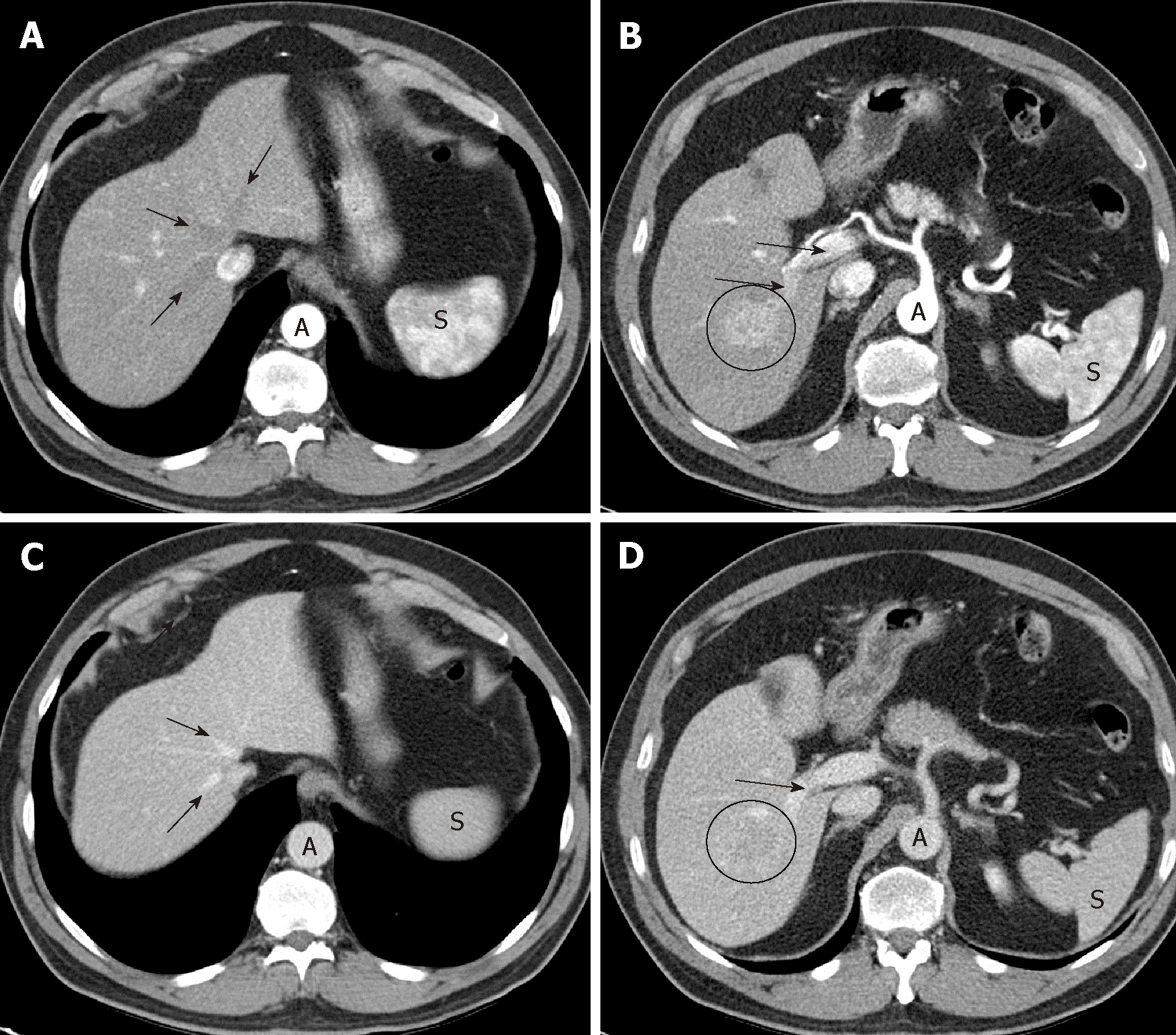Copyright
©The Author(s) 2019.
World J Clin Cases. Aug 26, 2019; 7(16): 2269-2286
Published online Aug 26, 2019. doi: 10.12998/wjcc.v7.i16.2269
Published online Aug 26, 2019. doi: 10.12998/wjcc.v7.i16.2269
Figure 1 Optimal late arterial phase and portal phase.
A, B: Hepatic artery and branches are fully enhanced. Portal vein is enhanced (arrows) but hepatic veins not yet enhanced by antegrade flow (arrows). Heterogeneous spleen. Aorta of very high density; C, D: Portal phase: portal veins are fully enhanced (D: arrows). Hepatic veins are enhanced by antegrade flow (C: arrows). Liver parenchyma is at peak enhancement. Homogeneous spleen. Portal vein even denser than aorta.
Figure 2 Importance of precise late arterial phase.
A: Too early arterial phase. Aorta and left hepatic artery (thin arrow) with high signal intensity, but no contrast is seen in portal vein (thick arrow). No contrast in the suspicious lesion; B: Late venous phase: washout and capsule in the lesion (but no diagnoses due to lack of hyperintensity in arterial phase due to bad technique). Note the artifact in MRI images (*); C: CT was performed in the same patient with a good late arterial phase depicting hyperattenuation of the lesion that it is now diagnostic. Contrast in left portal vein can be seen (thick arrow).
Figure 3 Importance of delayed phase.
A: Late arterial phase, 2 hypervascular lesions (circles); B: Portal phase, no washout is seen. Non-diagnostic imaging findings; C: Delayed phase: Washout in both lesions (circles). Diagnosis by imaging.
- Citation: Pascual S, Miralles C, Bernabé JM, Irurzun J, Planells M. Surveillance and diagnosis of hepatocellular carcinoma: A systematic review. World J Clin Cases 2019; 7(16): 2269-2286
- URL: https://www.wjgnet.com/2307-8960/full/v7/i16/2269.htm
- DOI: https://dx.doi.org/10.12998/wjcc.v7.i16.2269











